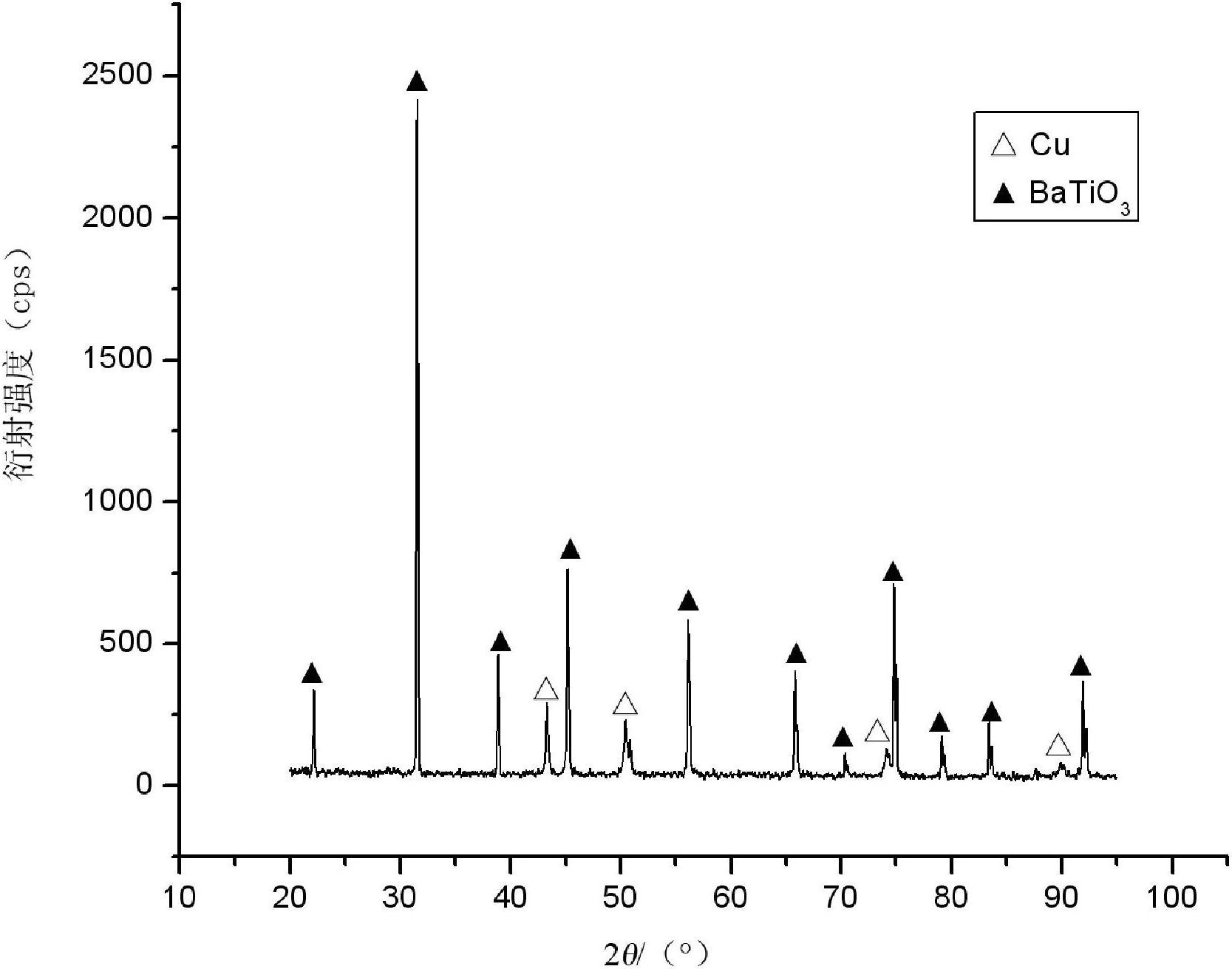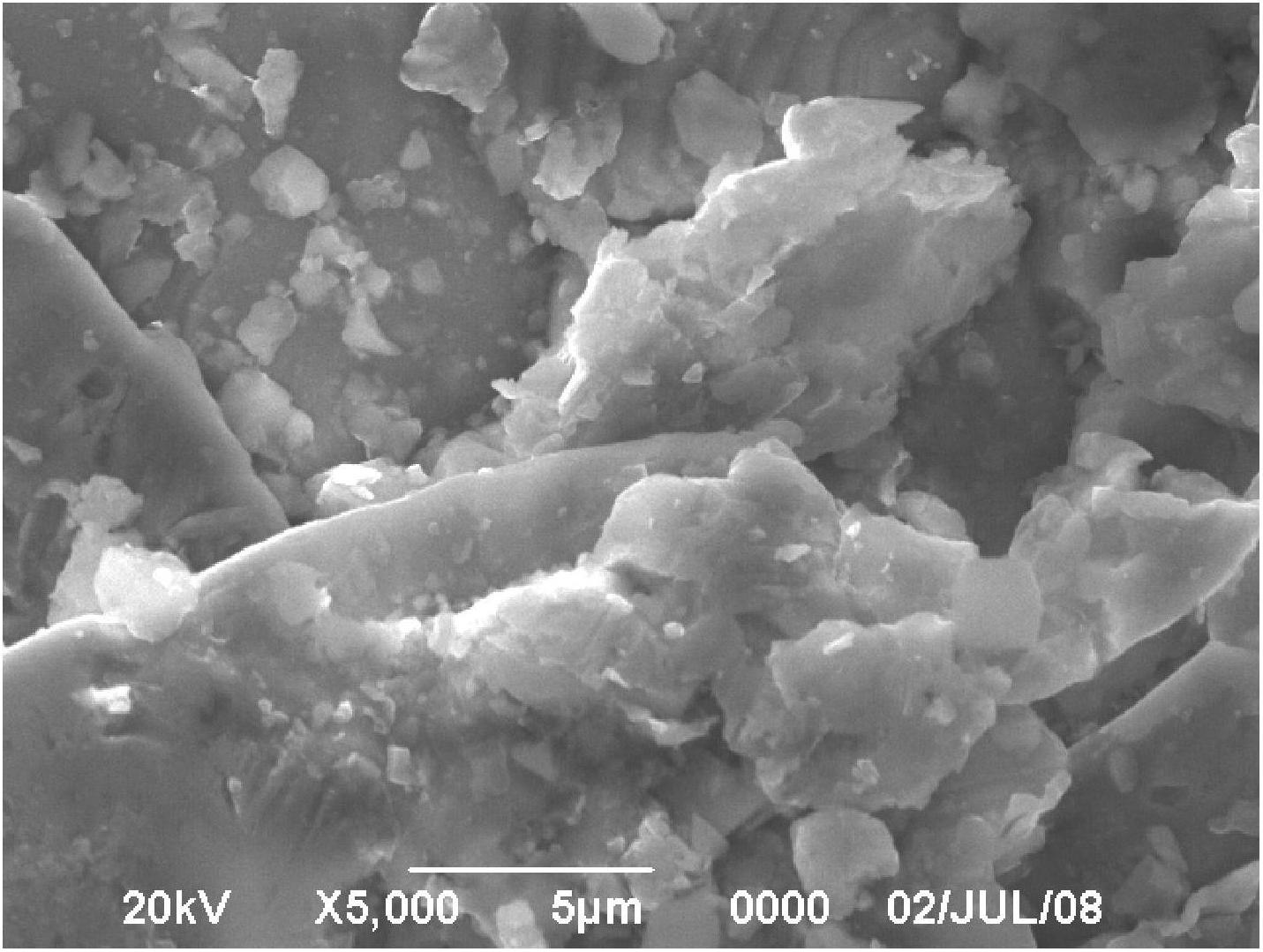Conductive copper paste for surface electrodes of chip ceramic capacitor and preparation method thereof
A ceramic capacitor, surface layer technology, applied in fixed capacitor electrodes, cable/conductor manufacturing, conductive materials dispersed in non-conductive inorganic materials, etc., can solve the problems of small capacity, poor performance, large loss, etc. Improved wetting properties, improved performance effects
- Summary
- Abstract
- Description
- Claims
- Application Information
AI Technical Summary
Problems solved by technology
Method used
Image
Examples
Embodiment 1
[0029] 1. Glass powder: weigh CaO: 10%, ZnO: 15%, Bi 2 o 3 : 44%, BaO: 8%, SiO 2 : 10%, B 2 o 3 : 10%, Al 2 o 3 : 3%, mixed evenly, then placed in a high-temperature furnace to melt at 1300~1500°C and stirred evenly to obtain molten glass, quickly quenched the molten glass to obtain glass beads, and ground for a long time (more than 24 hours) to obtain a particle size of 2 ~3 μm glass powder, set aside.
[0030] 2. Metal powder: Evenly mix 9.9 parts of Cu powder and 0.1 part of W powder with a particle size of 0.5-3 μm, and set aside.
[0031] 3. Organic binder: add 0.7 parts of ethyl cellulose to 9.1 parts of terpineol, stir to dissolve; then add 0.1 parts of silane coupling agent KH-550 and 0.1 parts of lecithin, and stir until completely Dissolved to obtain an organic binder, ready to use.
[0032] 4. Conductive copper paste: Weigh 6.9 parts of metal powder and 0.5 parts of glass powder, add 2.6 parts of organic binder in turn, mix thoroughly, and stir to make it ev...
Embodiment 2
[0035] 1. Glass powder: weigh CaO: 10%, ZnO: 10%, Bi 2 o 3 : 48%, BaO: 7%, SiO 2 : 10%, B 2 o 3 : 10%, Al 2 o 3: 5%, mixed evenly, then placed in a high-temperature furnace to melt at 1300~1500°C, and stirred evenly to obtain molten glass, quickly quenched the molten glass to obtain glass beads, and ground for a long time (more than 24 hours) to obtain a particle size of 2~3μm glass powder, set aside.
[0036] 2. Metal powder: Evenly mix 9.95 parts of Cu powder and 0.05 part of Mo powder with a particle size of 0.5-3 μm, and set aside.
[0037] 3. Organic binder: add 0.7 parts of ethyl cellulose to 9.2 parts of terpineol, stir to dissolve; then add 0.05 parts of silane coupling agent KH-550 and 0.05 parts of lecithin, and stir until completely Dissolved to obtain an organic binder, ready to use.
[0038] 4. Conductive copper paste: Weigh 7.0 parts of metal powder and 0.4 parts of glass powder, add 2.6 parts of organic binder in turn, mix thoroughly, and stir to make it...
Embodiment 3
[0041] 1. Glass powder: weigh CaO: 10%, ZnO: 8%, Bi 2 o 3 : 49%, BaO: 8%, SiO 2 : 10%, B 2 o 3 : 10%, Al 2 o 3 : 5%, mixed evenly, then placed in a high-temperature furnace to melt at 1300~1500°C, and stirred evenly to obtain molten glass, quickly quenched the molten glass to obtain glass beads, and ground for a long time (more than 24 hours) to obtain a particle size of 2~3μm glass powder, set aside.
[0042] 2. Metal powder: uniformly mix 9.9 parts of Cu powder and 0.1 part of W powder with a particle size of 0.5-3 μm, and set aside.
[0043] 3. Organic binder: add 0.74 parts of ethyl cellulose to 9.1 parts of terpineol, stir to dissolve; then add 0.08 parts of silane coupling agent KH-550 and 0.08 parts of lecithin, and stir until completely Dissolved to obtain an organic binder, ready to use.
[0044] 4. Conductive copper paste: Weigh 7.2 parts of metal powder and 0.4 parts of glass powder, add 2.4 parts of organic binder in turn, mix thoroughly, and stir to make i...
PUM
| Property | Measurement | Unit |
|---|---|---|
| size | aaaaa | aaaaa |
| particle diameter | aaaaa | aaaaa |
| particle diameter | aaaaa | aaaaa |
Abstract
Description
Claims
Application Information
 Login to View More
Login to View More - R&D
- Intellectual Property
- Life Sciences
- Materials
- Tech Scout
- Unparalleled Data Quality
- Higher Quality Content
- 60% Fewer Hallucinations
Browse by: Latest US Patents, China's latest patents, Technical Efficacy Thesaurus, Application Domain, Technology Topic, Popular Technical Reports.
© 2025 PatSnap. All rights reserved.Legal|Privacy policy|Modern Slavery Act Transparency Statement|Sitemap|About US| Contact US: help@patsnap.com


